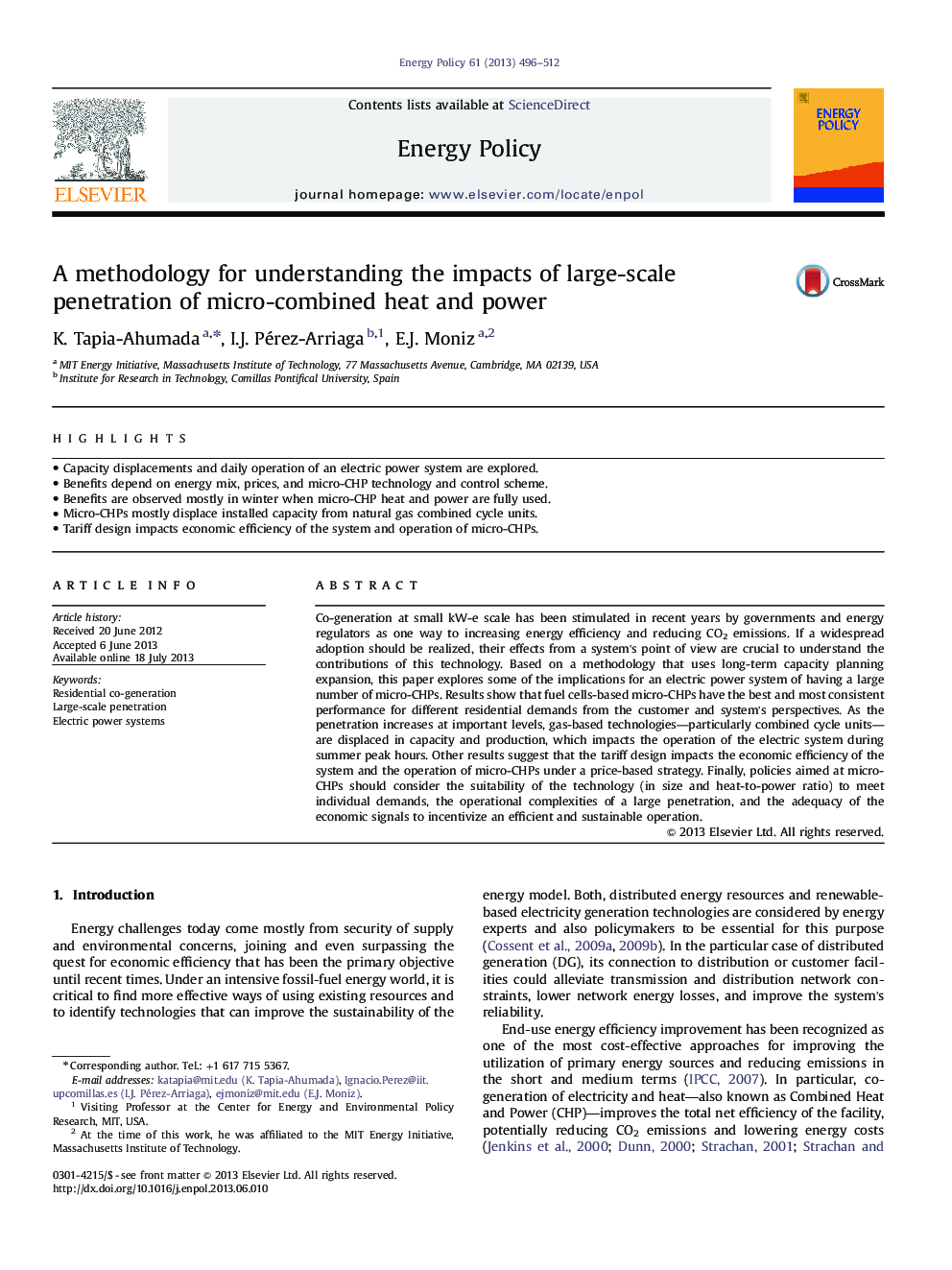| Article ID | Journal | Published Year | Pages | File Type |
|---|---|---|---|---|
| 7404461 | Energy Policy | 2013 | 17 Pages |
Abstract
Co-generation at small kW-e scale has been stimulated in recent years by governments and energy regulators as one way to increasing energy efficiency and reducing CO2 emissions. If a widespread adoption should be realized, their effects from a system's point of view are crucial to understand the contributions of this technology. Based on a methodology that uses long-term capacity planning expansion, this paper explores some of the implications for an electric power system of having a large number of micro-CHPs. Results show that fuel cells-based micro-CHPs have the best and most consistent performance for different residential demands from the customer and system's perspectives. As the penetration increases at important levels, gas-based technologies-particularly combined cycle units-are displaced in capacity and production, which impacts the operation of the electric system during summer peak hours. Other results suggest that the tariff design impacts the economic efficiency of the system and the operation of micro-CHPs under a price-based strategy. Finally, policies aimed at micro-CHPs should consider the suitability of the technology (in size and heat-to-power ratio) to meet individual demands, the operational complexities of a large penetration, and the adequacy of the economic signals to incentivize an efficient and sustainable operation.
Keywords
Related Topics
Physical Sciences and Engineering
Energy
Energy Engineering and Power Technology
Authors
K. Tapia-Ahumada, I.J. Pérez-Arriaga, E.J. Moniz,
